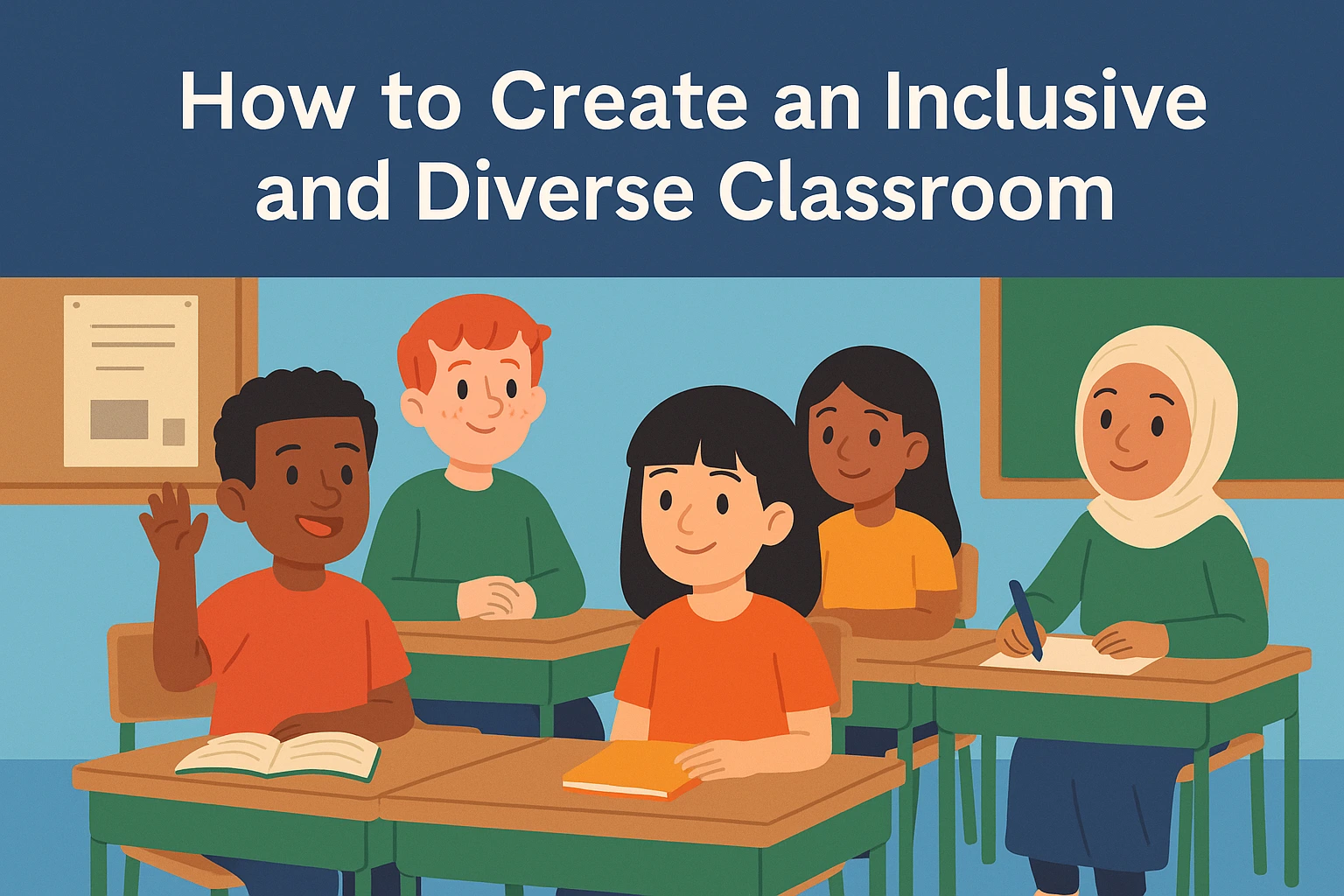🎓 How to Create an Inclusive and Diverse Classroom: Practical Guide for Teachers
Introduction
Creating an inclusive and diverse classroom is more than a teaching trend — it’s an essential responsibility for educators today. Every student, regardless of background, should feel safe, valued, and supported in your learning environment.
When you intentionally foster inclusion and celebrate diversity, you help students develop empathy, cultural awareness, and respect for differences. In this guide, you’ll find actionable tips to build a classroom where everyone belongs and thrives.
💡 Why Inclusion and Diversity Matter
An inclusive classroom respects all students’ unique identities, languages, and experiences. Research from Edutopia (external authority link) shows that inclusive practices boost academic achievement, self-esteem, and social skills.
Moreover, diverse learning environments prepare students for success in an increasingly global world.
📌 Practical Steps to Build an Inclusive and Diverse Classroom
✅ 1. Learn About Your Students
Get to know your students’ backgrounds, interests, and learning needs. Use surveys or informal conversations to build trust. Understanding their stories helps you adapt lessons and connect better.
✅ 2. Use Culturally Relevant Materials
Incorporate books, examples, and visuals that reflect a range of cultures, languages, and perspectives. Doing so allows students to see themselves represented and appreciate others.
✅ 3. Establish Clear, Respectful Rules
Work with students to set classroom norms that promote respect, kindness, and open-mindedness. Reinforce these rules consistently to build a safe environment.
✅ 4. Differentiate Instruction
Recognize that students learn in different ways and at different paces. Provide multiple ways to access content, demonstrate understanding, and participate in class activities.
✅ 5. Address Bias and Stereotypes
Encourage critical thinking by discussing stereotypes when they arise. Teach students how to challenge biased ideas respectfully. This helps build a culture of equity.
✅ 6. Foster Collaborative Learning
Use group work and peer activities to encourage cooperation among students from different backgrounds. Diverse teams bring fresh ideas and build social bonds.
✅ 7. Be a Role Model
Show inclusive behavior through your words and actions. Celebrate cultural events, pronounce names correctly, and intervene immediately when disrespect occurs.
✅ 8. Engage Families and Communities
Partner with families to understand students’ home cultures and values. Hosting multicultural events or inviting guest speakers can enrich learning and strengthen community ties.
📚 How SkillUp Learn Supports Inclusive Teaching
At SkillUp Learn, we provide teachers with practical courses, downloadable resources, and expert support to help create classrooms where diversity is celebrated and all students succeed.
Explore our teacher resources and training programs to enhance your inclusive teaching strategies today.
✅ Conclusion
Building an inclusive and diverse classroom is an ongoing journey. Small, consistent efforts help every student feel respected and empowered to learn. By using culturally responsive materials, fostering collaboration, and modeling inclusive behavior, you create a positive space where differences are strengths.



